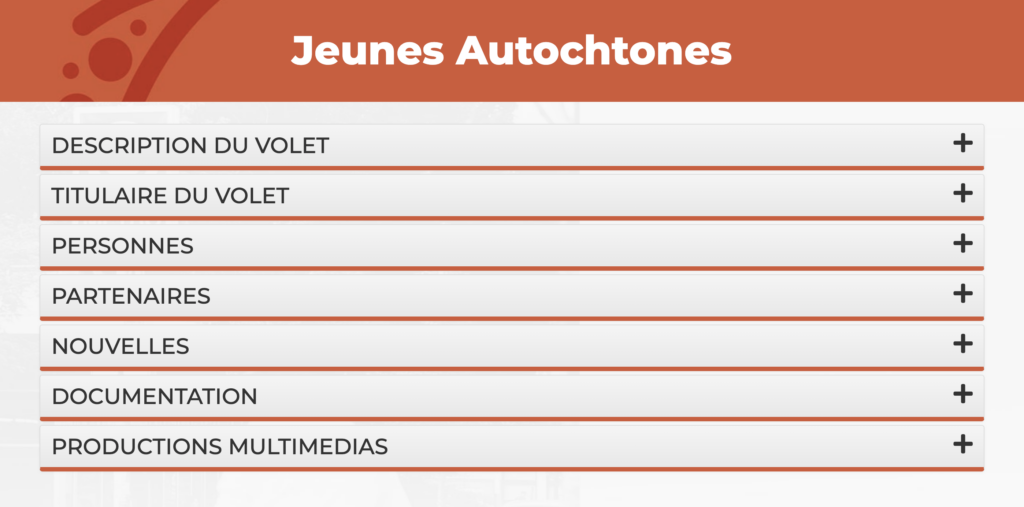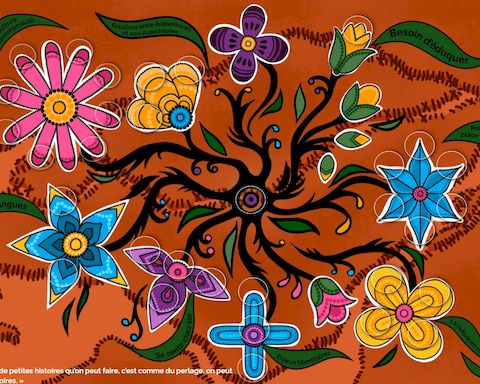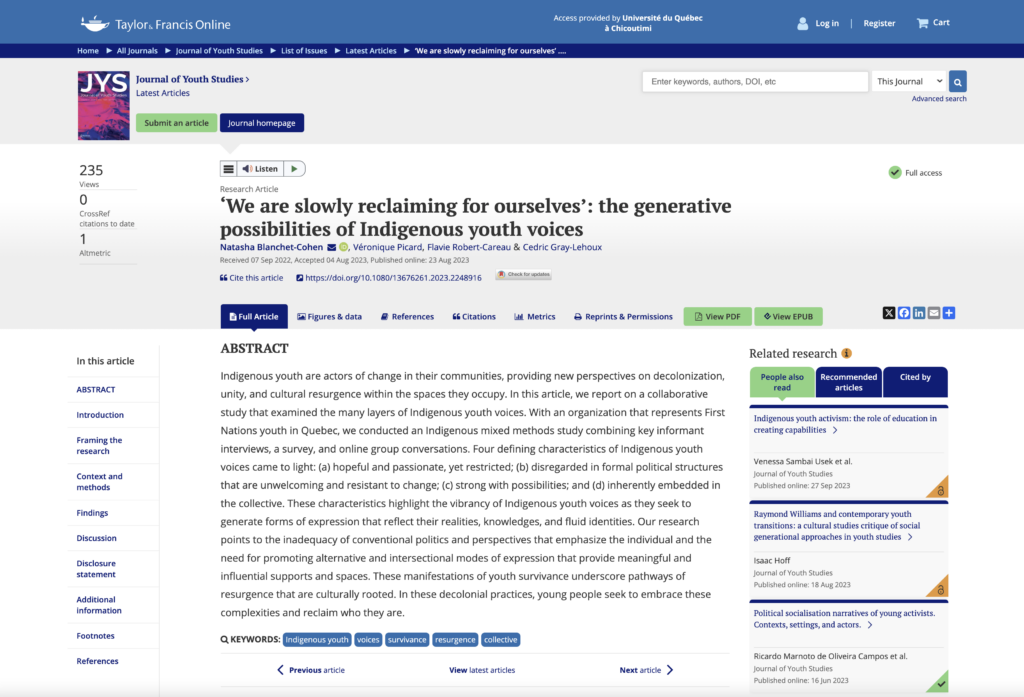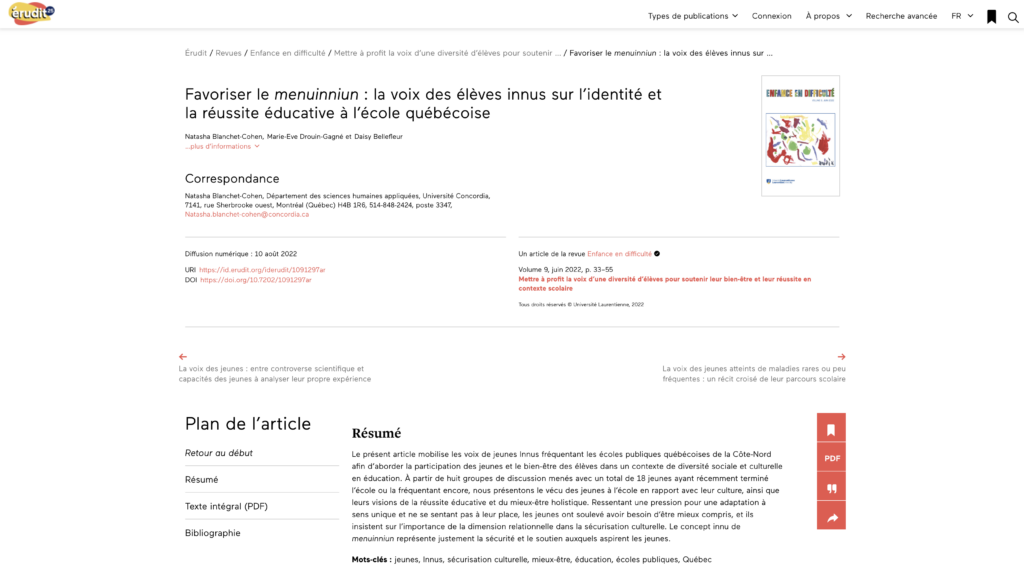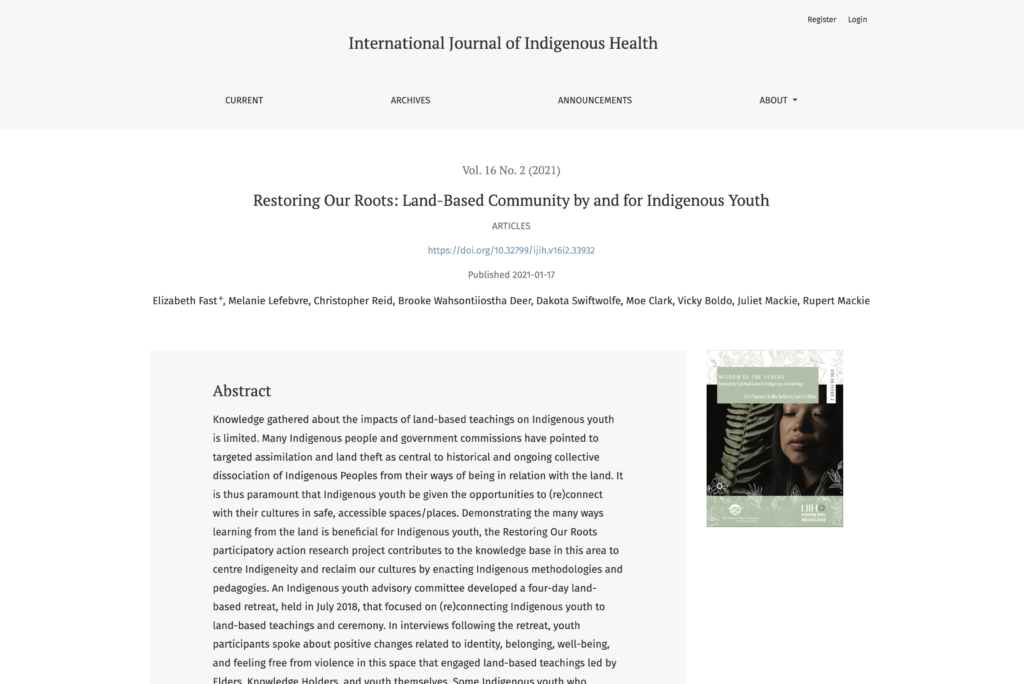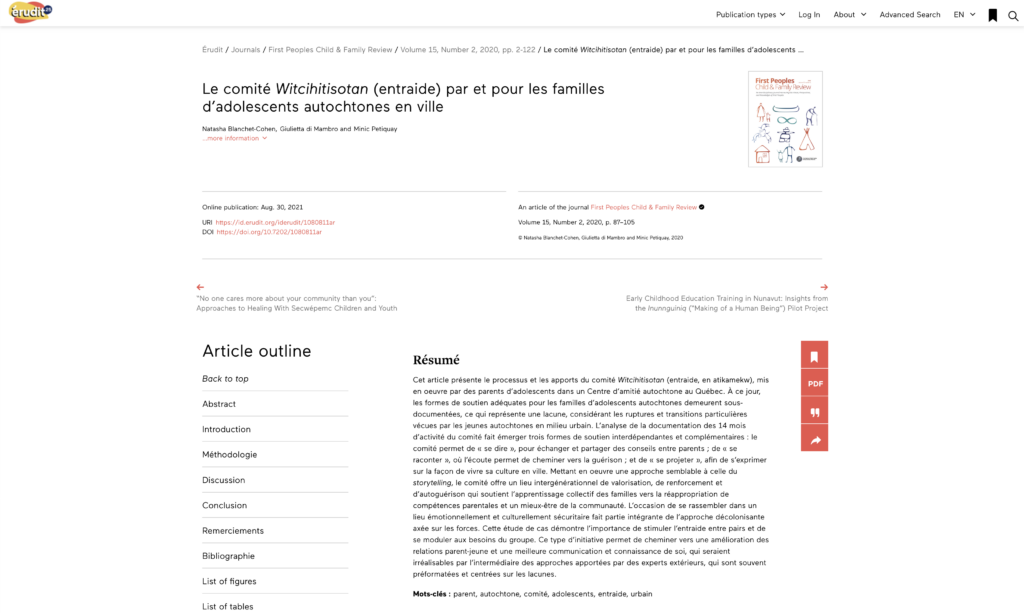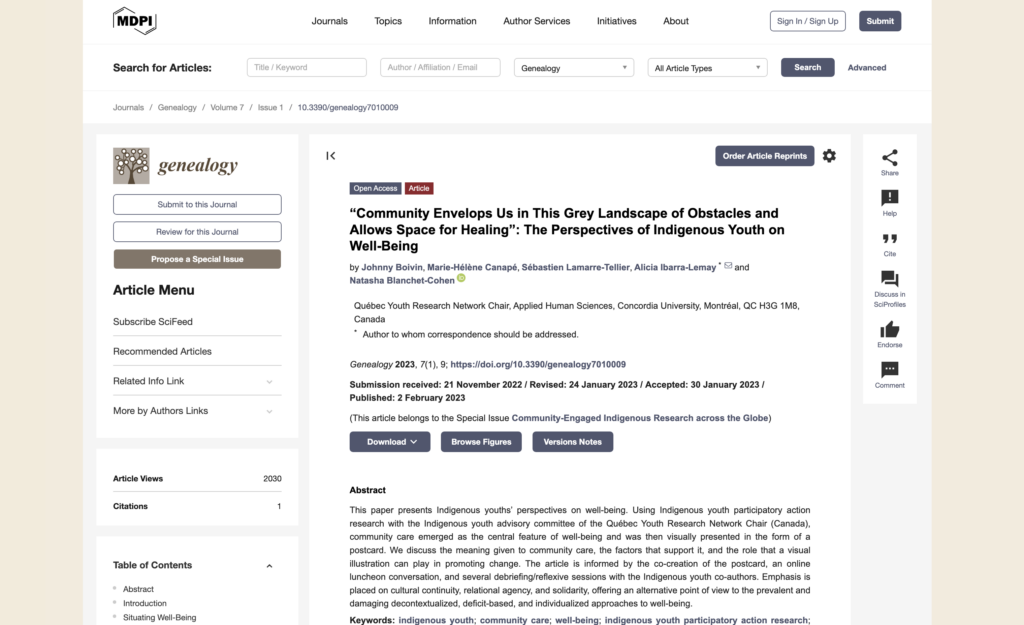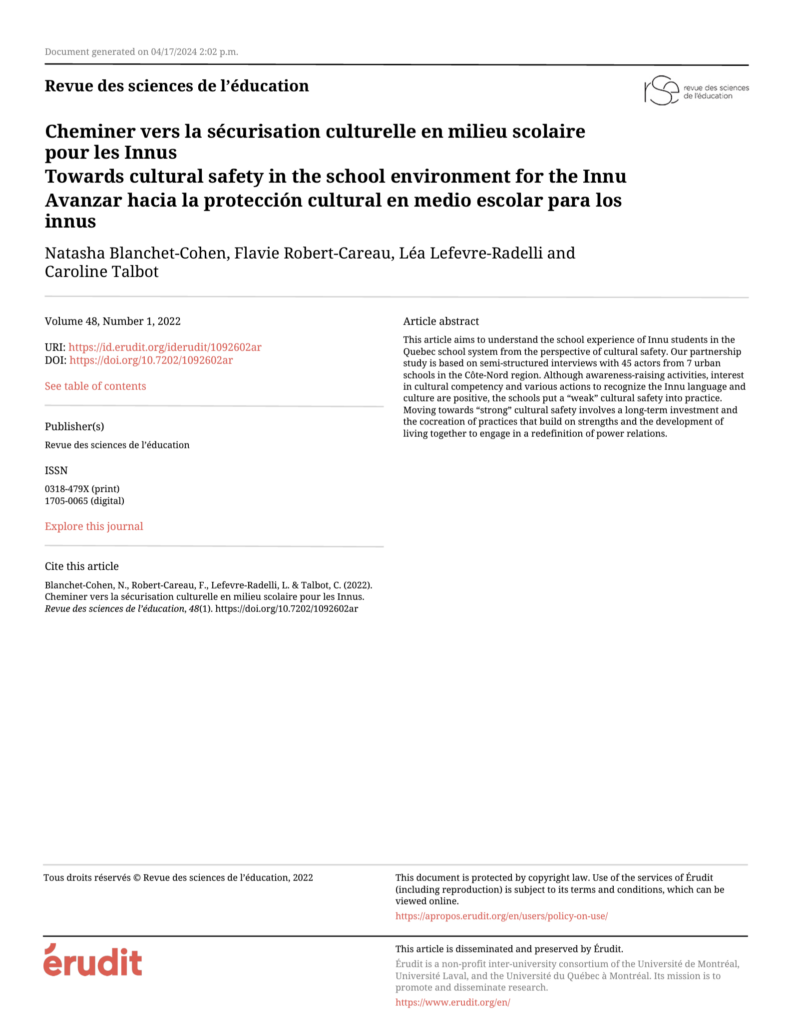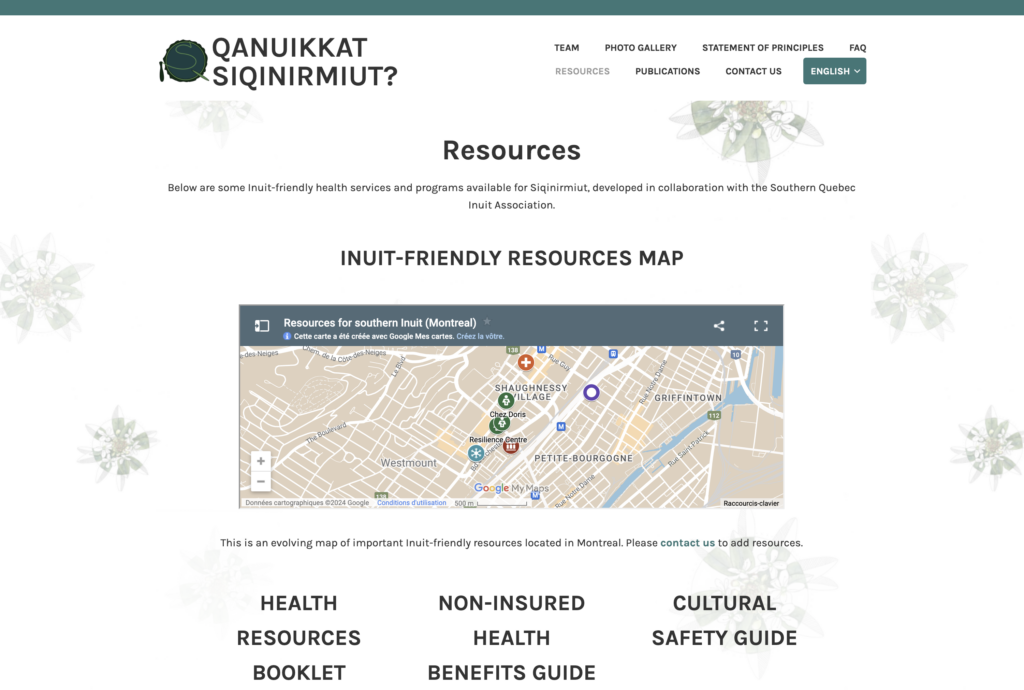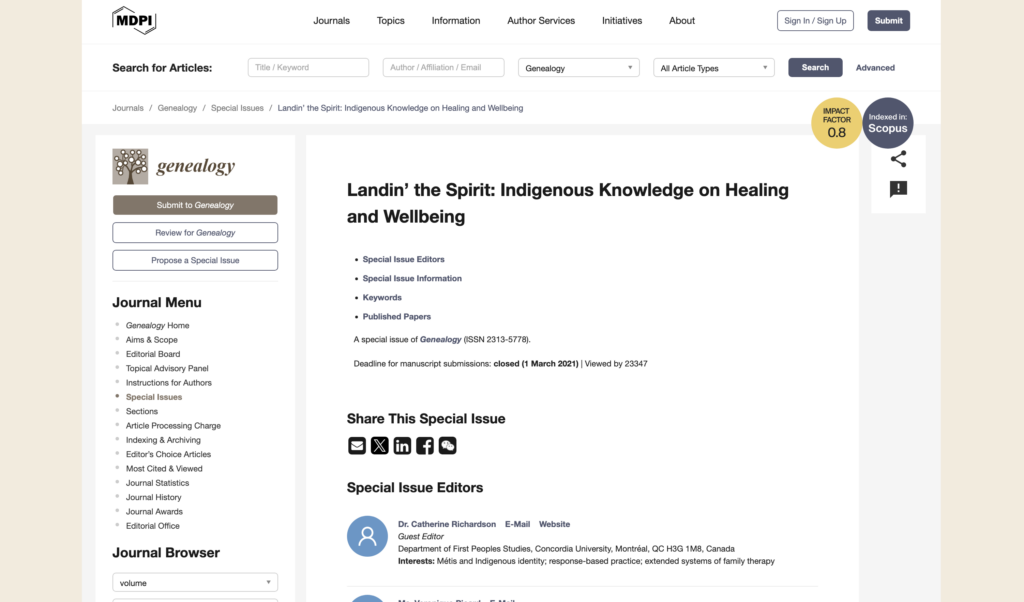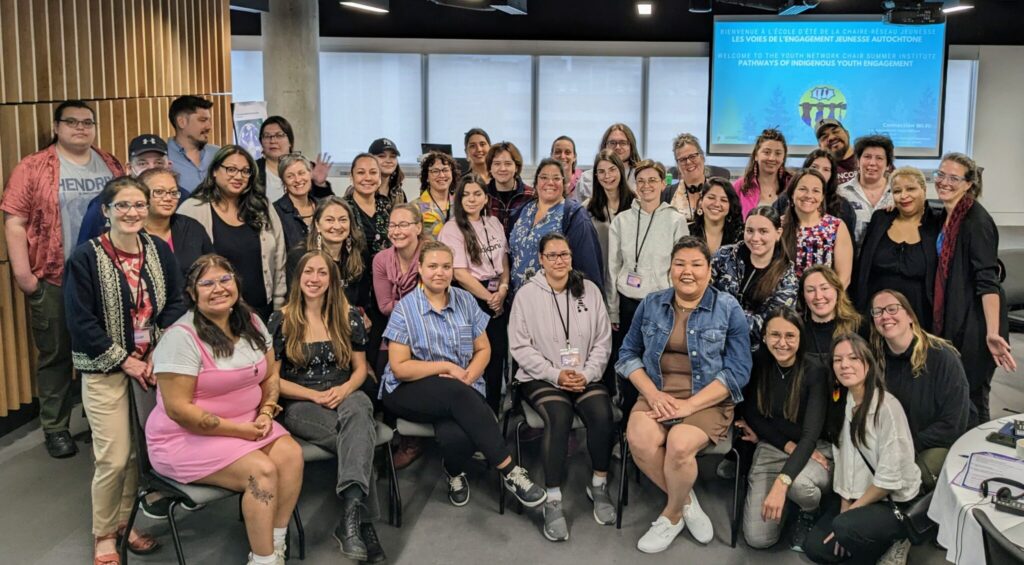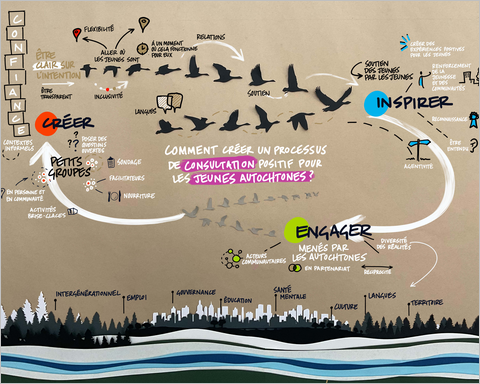Notice bibliographique
Harding, A. et St-Denis, X. (2021). Low-Income Statistics for the Population Living on Reserve and in the North Using the 2016 Census (publication no. 75F0002M). Statistique Canada.
Résumé
People living in First Nations communities and the territories have historically been absent from most research and statistics concerning low-income measures. Today, Statistics Canada is releasing a study entitled « Low-income statistics for the population living on reserve and in the North using the 2016 Census, » which empirically investigates the production of low-income statistics for the North and Indigenous communities. The study released today explored the use of 2015 income data collected in the 2016 Census to provide an initial descriptive analysis of low income in the territories, in Inuit Nunangat (the traditional Inuit homeland) and on reserves. This includes analysis by Indigenous identity and other sociodemographic characteristics, such as education and family status. Plans are in place to integrate 2021 Census data for the areas covered in this study as they become available. This study uses the low-income measure (LIM) methodology, which deems a person to have low income if their household income is less than half the median household income for Canada, accounting for household size. For example, the LIM threshold calculated in this study was $44,080 for a four-person family, and $31,169 for a two-person family. It is important to note that the LIM is not Canada’s Official Poverty Line, and that statistics based on this methodology should not be interpreted as poverty rates.
Hyperlien
https://www150.statcan.gc.ca/n1/daily-quotidien/210921/dq210921d-eng.htmPublication du membre
Xavier St-DenisAppartenance aux volets










